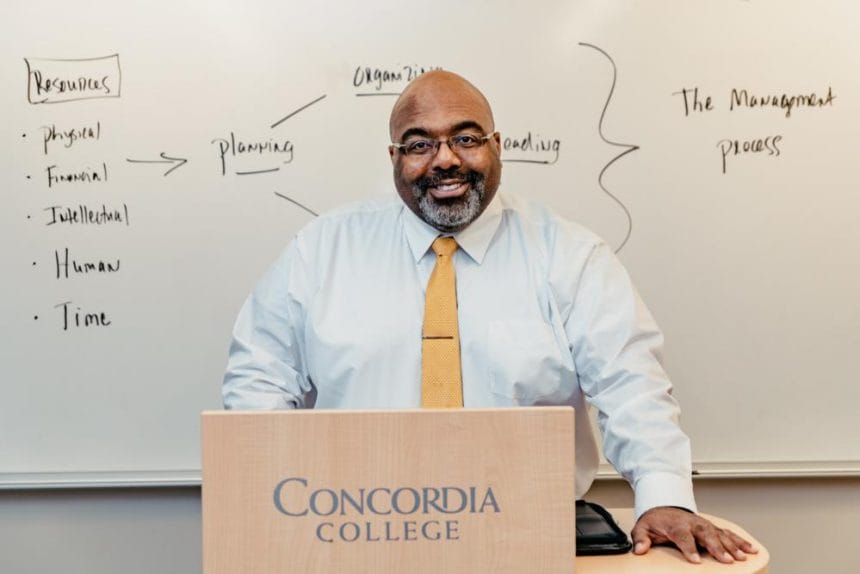One of the many things that I stress to my management students is to learn how to analyze a situation, scenario, or problem in depth before determining a solution to resolve it. This is key because it is my position that the actions we take in response to a situation can be traced back toour understanding and perception of the situation itself. Each of us is faced with a myriad of decisions both in our personal lives and in our careers. Some decisions are easy and straightforward. Others are more difficult and ambiguous. I often marveled at individuals who had the ability to solve complex problems, and I wanted to improve in this area myself. In my pursuit for self -development earlier in my career, I was looking for something that would help me to become a better problem solver.
The answer for me was found in a book written by Rushworth M. Kidder (2003) titled “How Good People Make Tough Decisions.” In this book, the author presented an explanation on why some decisions are more difficult than others. According to Kidder, decisions that are based on the nature of Right vs. Wrong are easier. In other words, when faced with a choice to do the right thing versus the wrong thing, the obvious answer or choice is to do the right thing. The most difficult decisions we face involve scenarios in which two values conflict with one another. These types of decisions are characterized as Right vs. Right decisions.
So how do we, as individuals, learn how to examine and navigate scenarios when there could be multiple right choices available? The answer is to look at each situation, scenario or problem we face and to identify which of the four types of conflicts or paradigms could be present:
- Paradigm #1 – Justice vs. Mercy: The conflict is described as a clash between “fairness, equity, and even-handed application of the law” versus “compassion, empathy, and love.”
- Paradigm #2 – Short Term vs. Long Term: The conflict is present when “immediate needs or desires run counter to future goals or projects.”
- Paradigm #3 – Individual vs. Community: The conflict is characterized as “us versus them, self versus others or the smaller versus the larger group.”
- Paradigm #4 – Truth vs. Loyalty: The conflict is characterized as “honesty, candor, or integrity versus commitment, responsibility, or promise-keeping.”
It is my assumption that by reading these descriptions, each of you can probably identify past or current situations or problems that you’ve encountered that could be directly tied to one of these paradigms.
Insights and Application
What I love about the Kidder framework is that it helps a person to become more aware of underlying issues or conflicts in a situation. And to reiterate and to re-emphasize my earlier statement, the more perceptive a person is in understanding situations and underlying conflicts, the better they will be in determining solutions. To learn more about these paradigms, I highly recommend reading Kidder’s book in its entirety. But in the meanwhile, I’d like to share some additional insights and takeaways:
- Be honest about your natural tendencies. Similar to how a computer software program (i.e., Microsoft Word) has default settings, we as humans have default settings, or tendencies, when it comes to making decisions or choices. For example, let’s take the Truth vs. Loyalty paradigm. There are some who adopt a “tell the truth at all times no matter what” mindset, which would indicate their natural tendency to prioritize Truth when facing a problem. Others may adopt a “never break a promise under any circumstances” mindset, which would indicate their natural tendency to prioritize Loyalty when facing a problem. I recommend that an individual do a quick self-assessment for each paradigm to determine which value resonates the most with them under most circumstances.
- Multiple paradigms can be present in a situation, scenario, or problem. Earlier in my teaching career, I dealt with a scenario that, upon reflection, contained 3 of the 4 paradigms listed above (Paradigms 1, 2 and 3). Keep in mind that it can be difficult to deal with a scenario with just one paradigm present; imagine the complexity of a scenario with multiple present! In situations like this when multiple paradigms or conflicts are present, it could be that each paradigm are equally important, or perhaps one paradigm might be more dominant or prevalent than the others thus requiring more consideration. In that case, prioritize which paradigm to examine first when attempting to understand the situation.
- Determine ways to utilize this framework throughout the organization. Whenever I share this framework with my students and we utilize it in class, several positive things happen. First, it gives all of us a common language to discuss scenario analysis and decision making. Second, it promotes peer-to-peer learning. For example, I will provide the class with various scenarios and ask them to identify which paradigms are present and to explain their rationale to the entire class. During the discussions, oftentimes one small group will highlight a certain issue that other group completely missed. The result is that all students benefit and learn from one another. Applying this in a business setting, managers could utilize this framework to have a common language regarding decision making throughout the organization and empower supervisees/employees to utilize this when making decisions in their day-to-day work.
Dr. Aikens can be reached at: [email protected]








